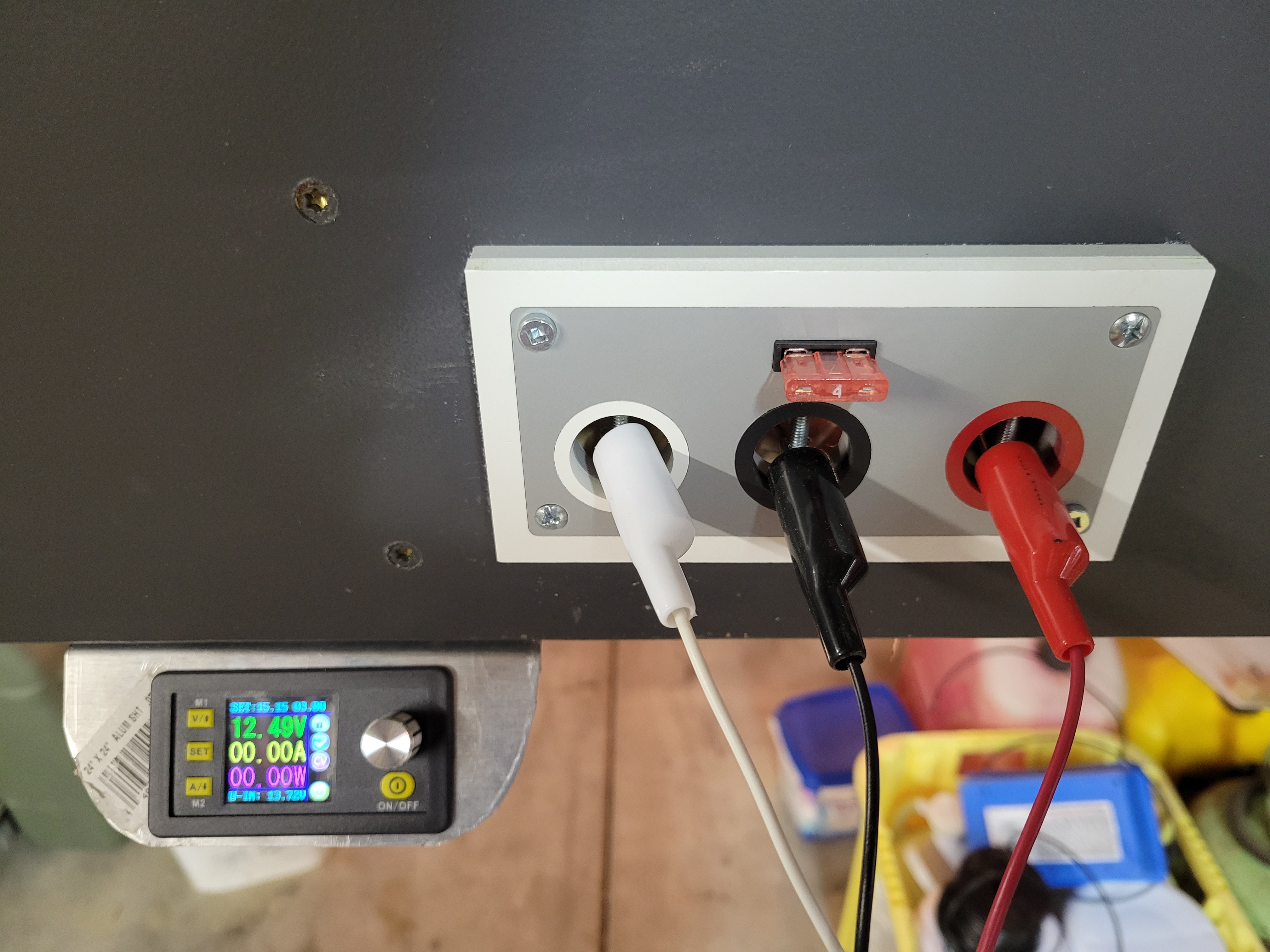 Finally able to get back to work on the new track this week. Not a lot of progress but I was able to wire up one driver’s station and test the individual lane voltage control hardware.
Finally able to get back to work on the new track this week. Not a lot of progress but I was able to wire up one driver’s station and test the individual lane voltage control hardware.
Yep, SR3 will support testing pretty much any type of car simultaneously. In the past, most tracks have one or two power supplies and everybody had to test/practice at the same voltage. SR3 was designed to allow any lane to operate at whatever voltage the driver desires.
![]()
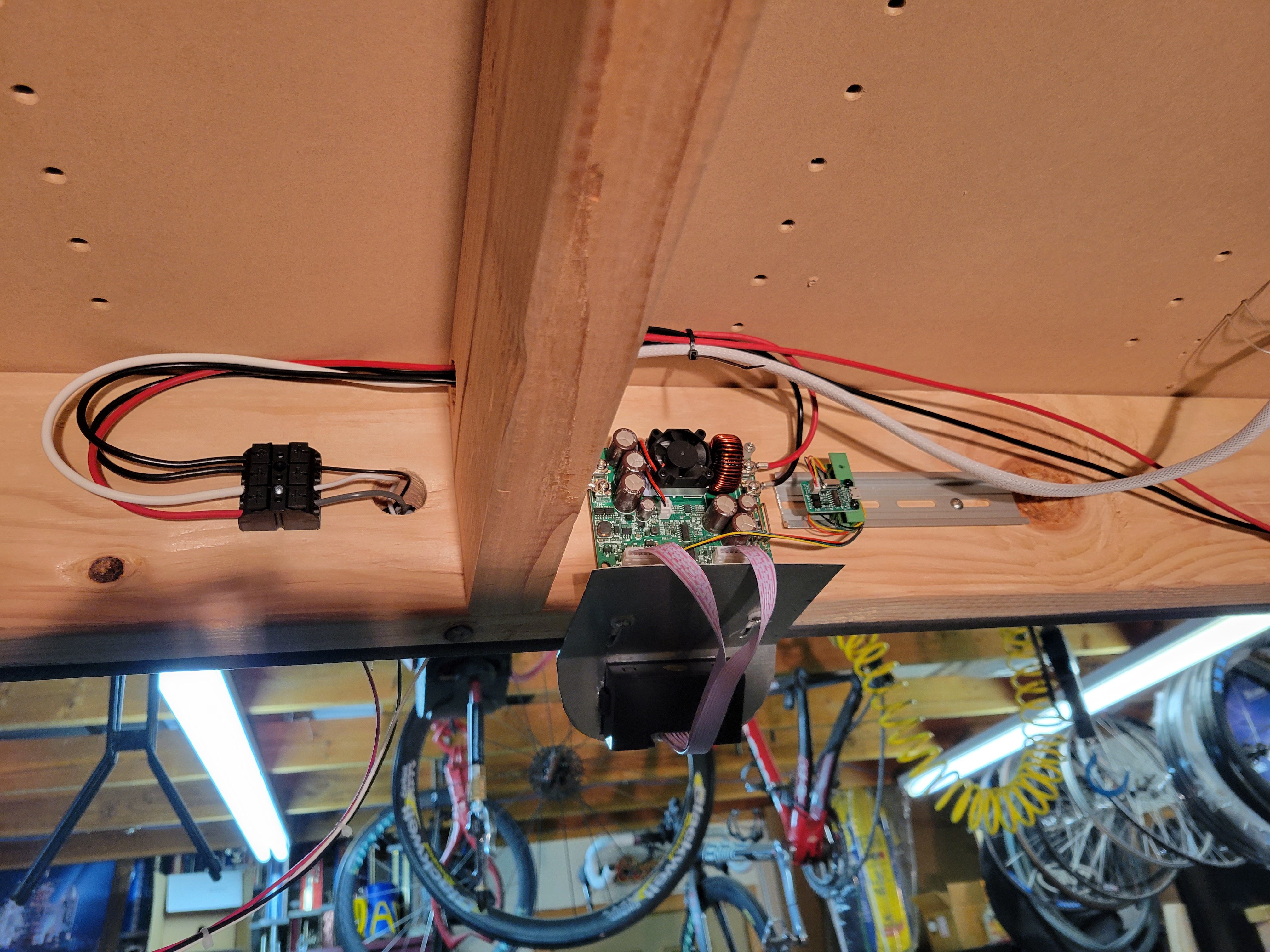 The initial hardware will support two preset voltage selections and a variable voltage setting. The track will be fed by two 30VDC, 10-amp, regulated power supplies: one for lanes 1, 2, and 3; the other on the opposite side of the track supplying power to lanes 4, 5, and 6.
The initial hardware will support two preset voltage selections and a variable voltage setting. The track will be fed by two 30VDC, 10-amp, regulated power supplies: one for lanes 1, 2, and 3; the other on the opposite side of the track supplying power to lanes 4, 5, and 6.
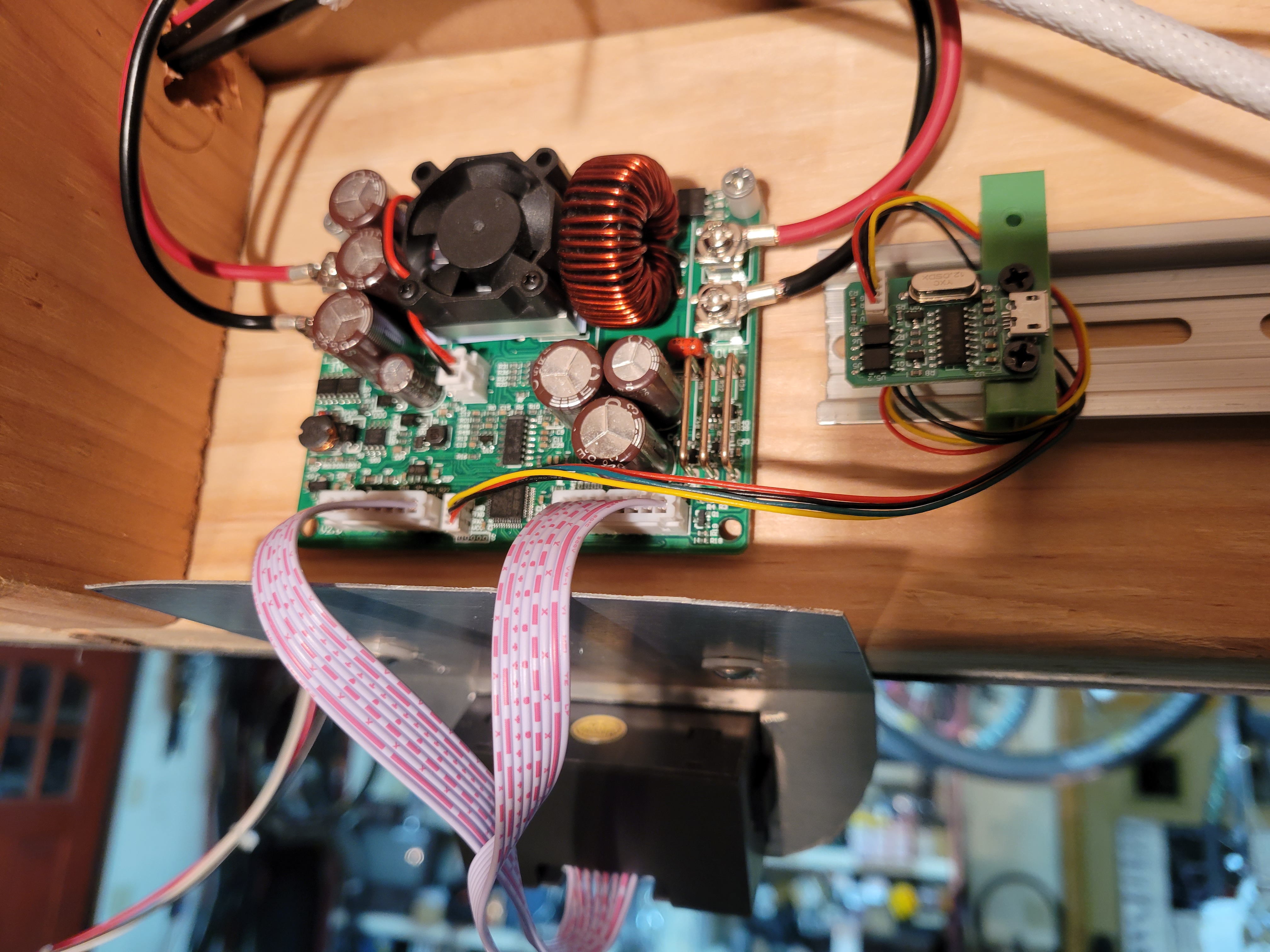 The key technology that allows the driver to select lane voltage at the driver’s station is programmable DC Voltage Converters at each driver’s station. A small console just below the driver’s station allows the driver to set or adjust the voltage to whatever car or power level they want to test or practice at.
The key technology that allows the driver to select lane voltage at the driver’s station is programmable DC Voltage Converters at each driver’s station. A small console just below the driver’s station allows the driver to set or adjust the voltage to whatever car or power level they want to test or practice at.
I’ve always hated the fact that we could always only test/practice at a given voltage level, which severely limited track time and testing. This system should alleviate that problem and provide much more flexibility to drivers during practice and testing sessions.
Of course, the race computer can set and lock these devices to a common voltage for racing purposes. But when the track is open for testing or practice, drivers can run any type of car, at any voltage, from 5v to 28v.
That’s the plan anyway. Today, I tested the wiring and hardware on one lane and it worked flawlessly. The next test is with all six driver’s stations–at the same time. Then, of course, it’ll all have to be tested in real race conditions using the track computer to control all stations.
It’s coming along nicely but still a lot of painstaking labor and technical hurdles to overcome.
Okay, shut up and drive!

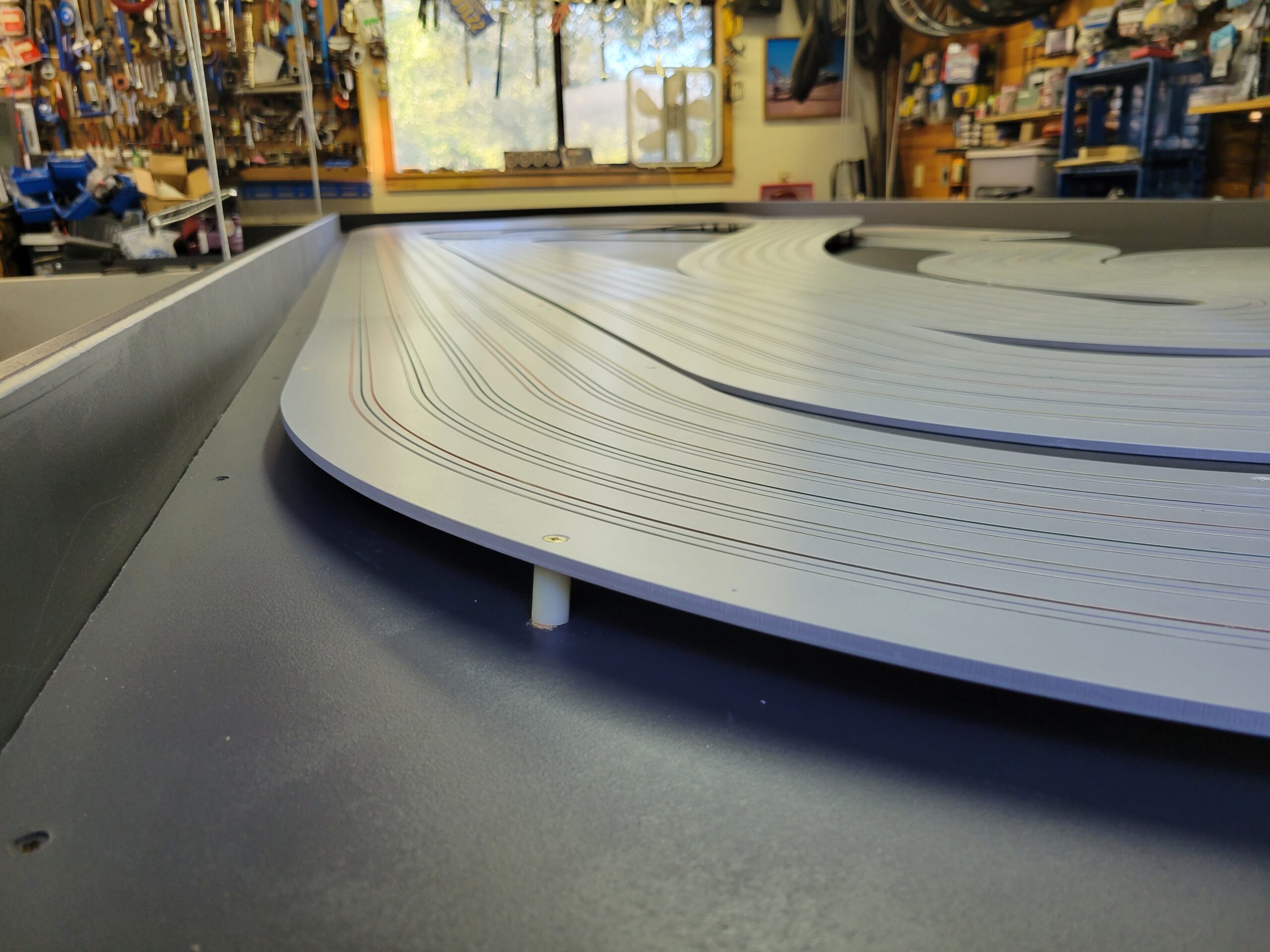


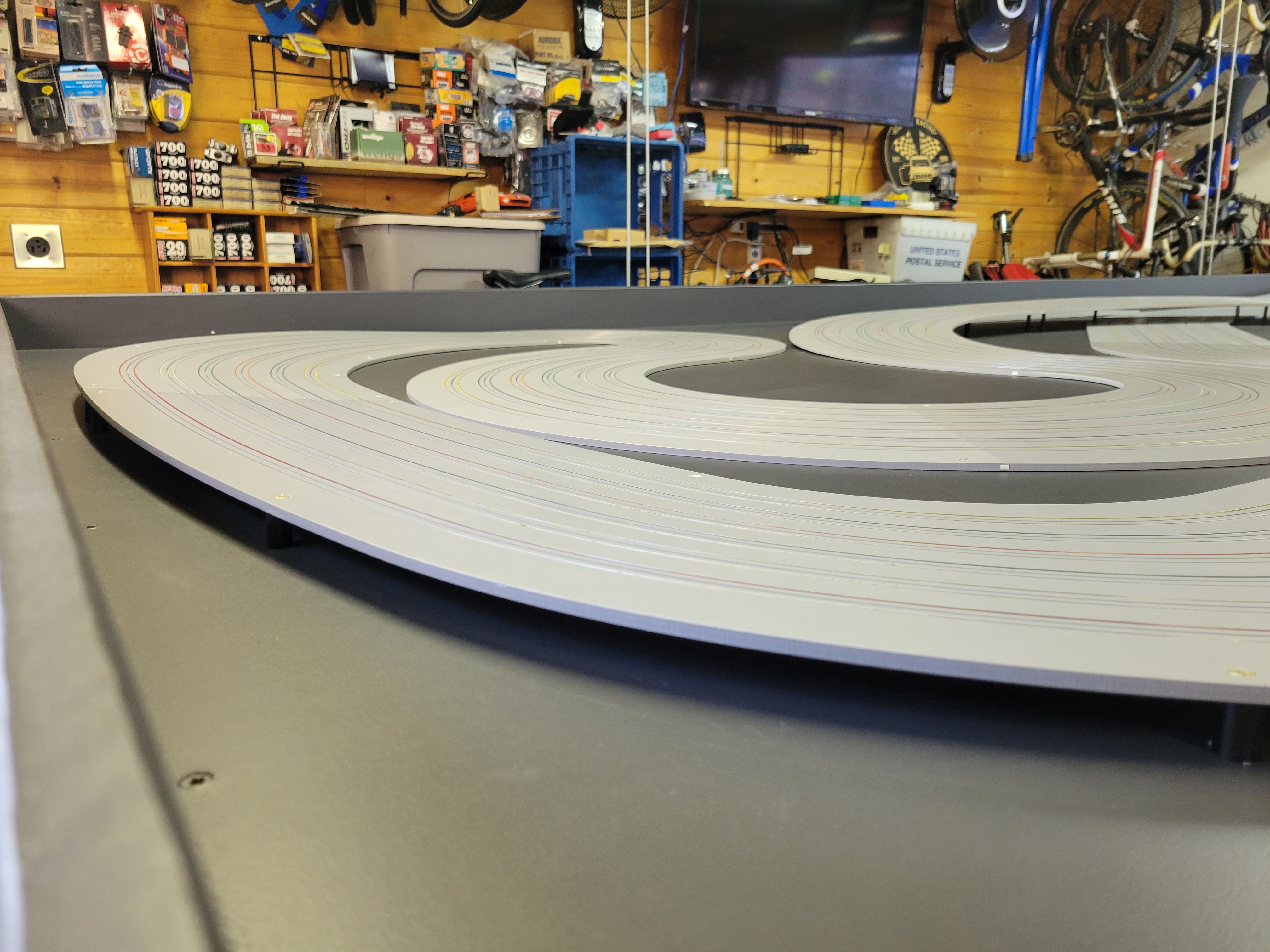
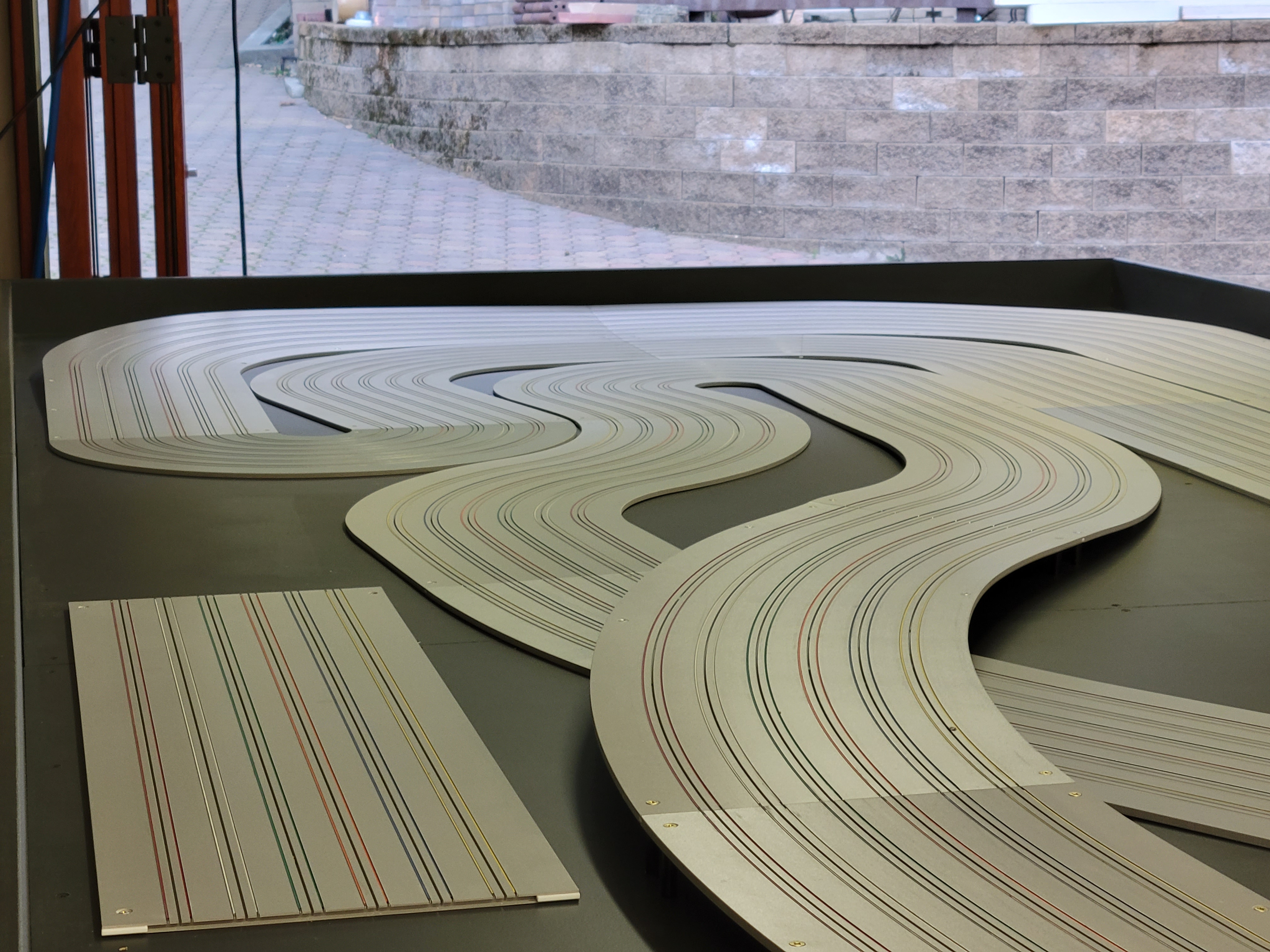
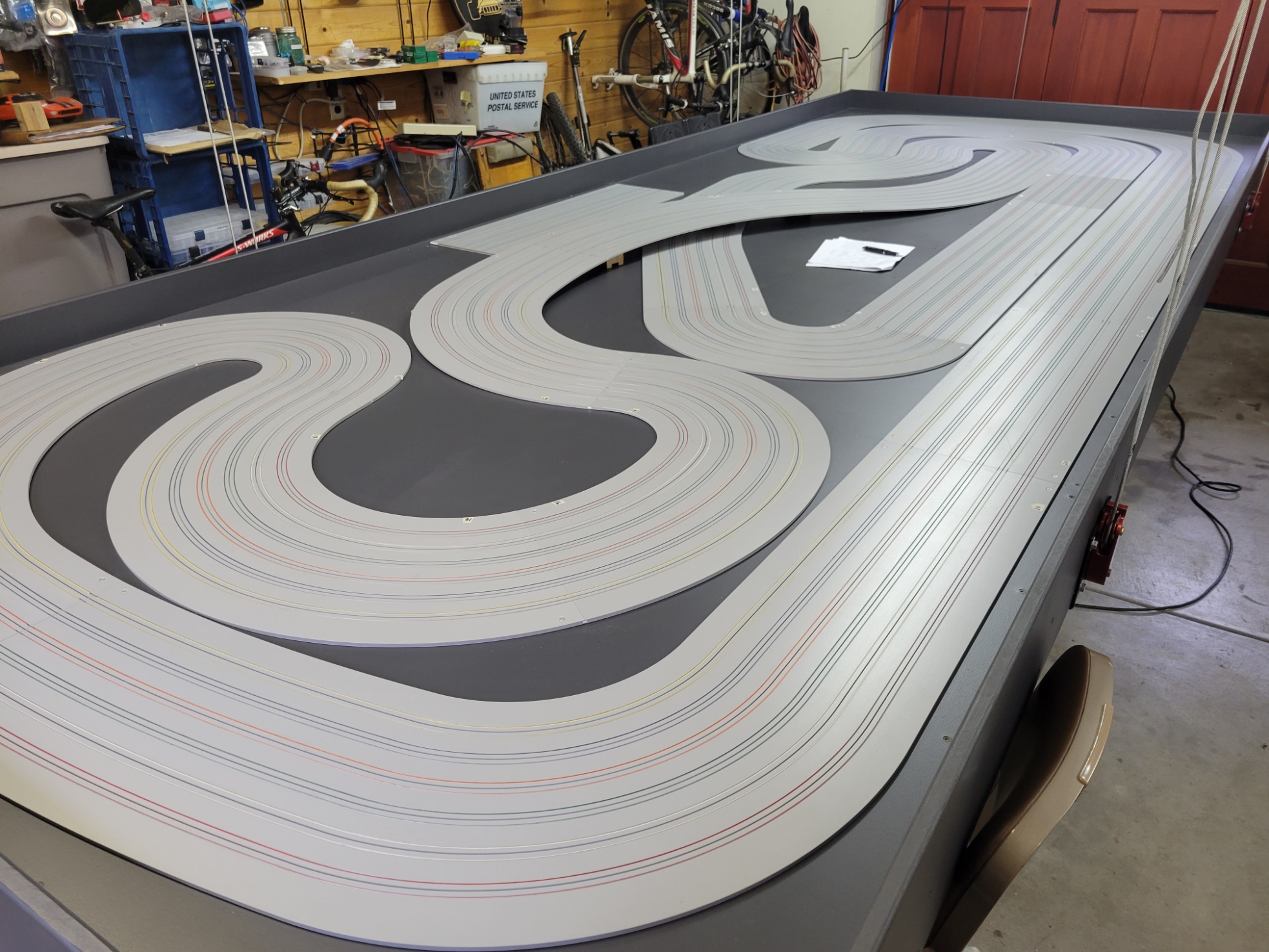
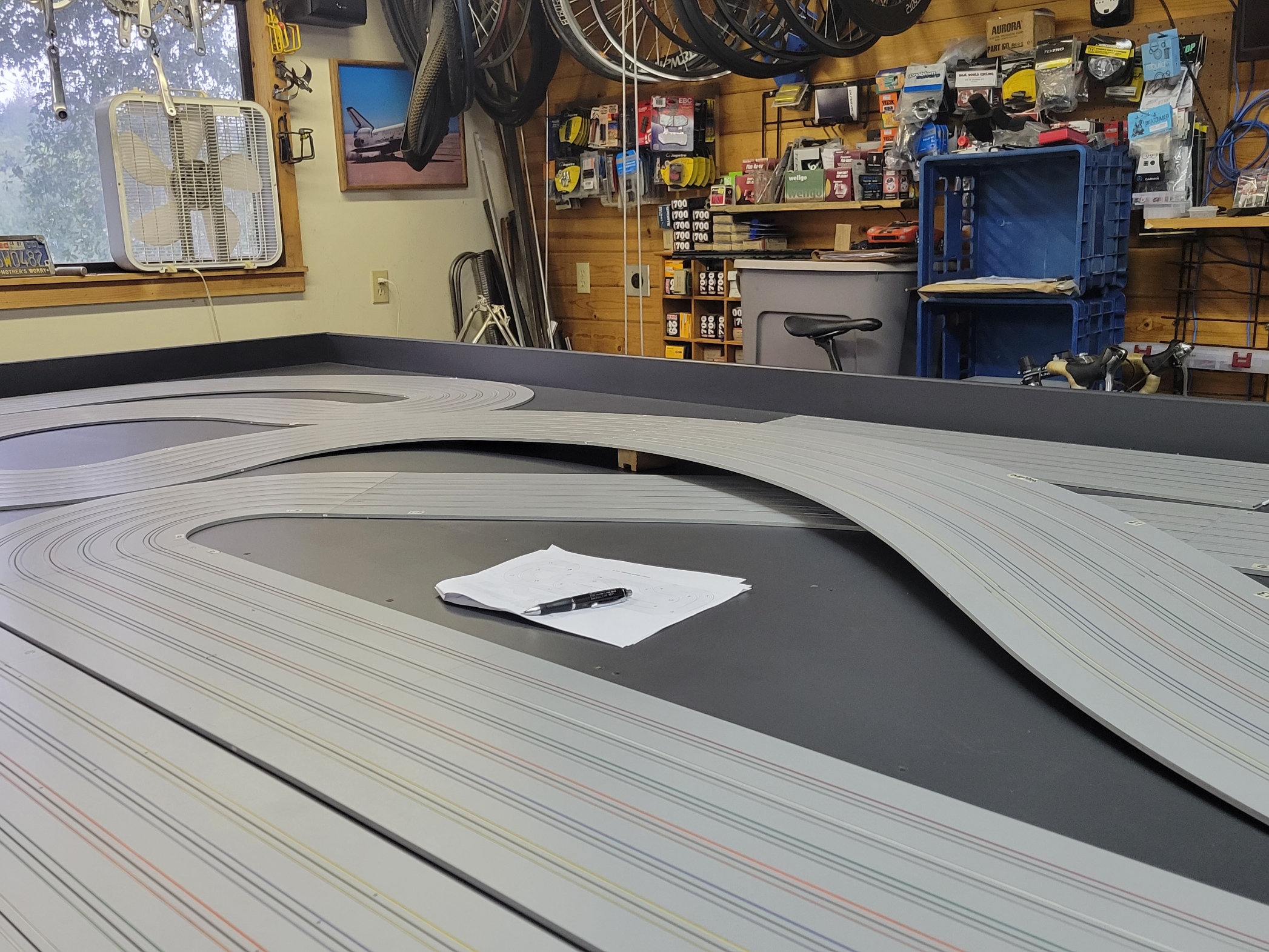
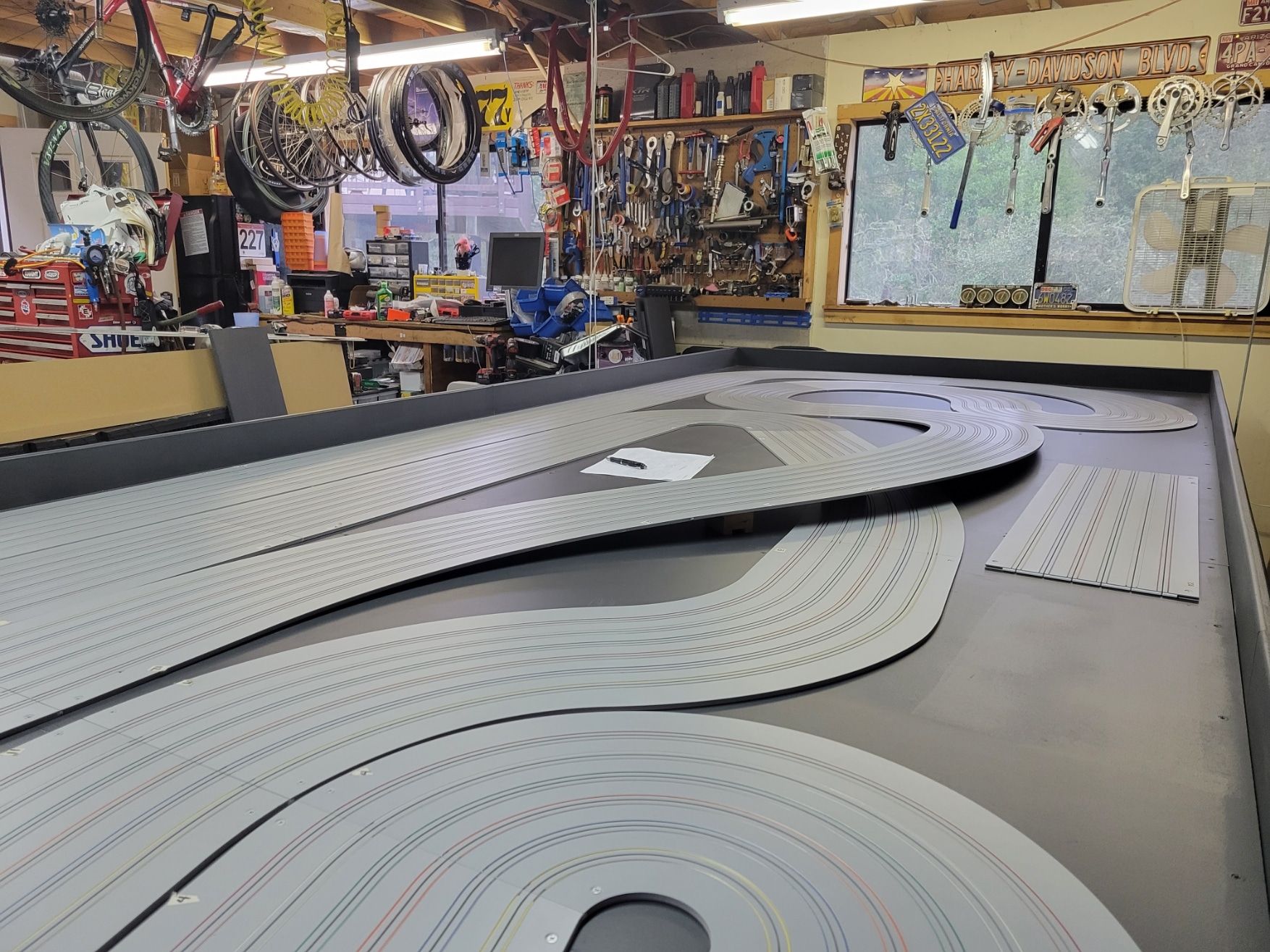
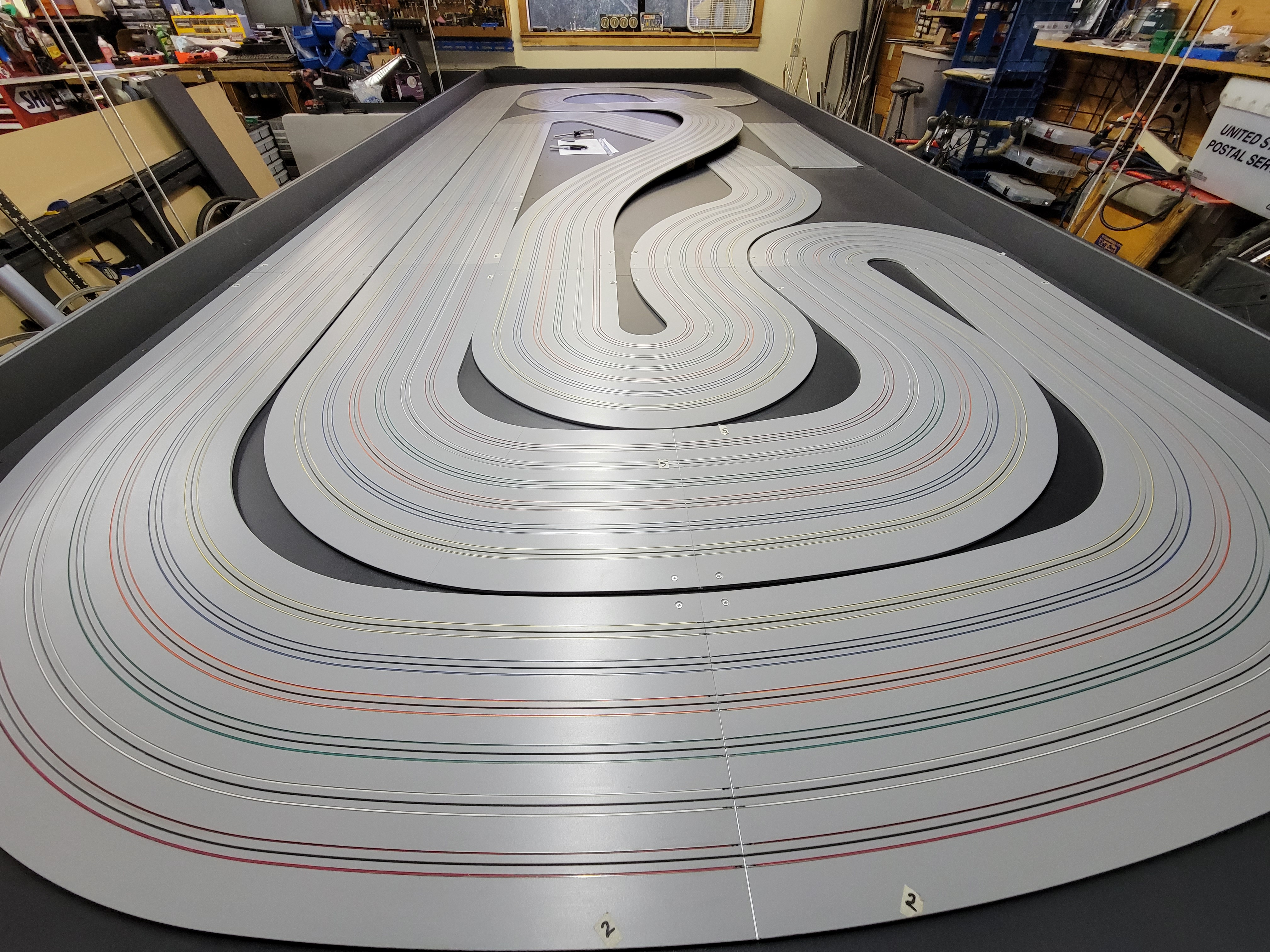 Once I get this stage completed, it’ll be time to secure each track piece completely to the table and then start the basic track and power tap wiring. I’m planning a “Phase 1” power solution for the track opening, which will be at least the same power control setup we have on the SR2 VSR track. Phase 2 will be driver-selectable voltage levels for each lane, from 3v to ~28v, which will also be programmable from the track computer by the race director.
Once I get this stage completed, it’ll be time to secure each track piece completely to the table and then start the basic track and power tap wiring. I’m planning a “Phase 1” power solution for the track opening, which will be at least the same power control setup we have on the SR2 VSR track. Phase 2 will be driver-selectable voltage levels for each lane, from 3v to ~28v, which will also be programmable from the track computer by the race director.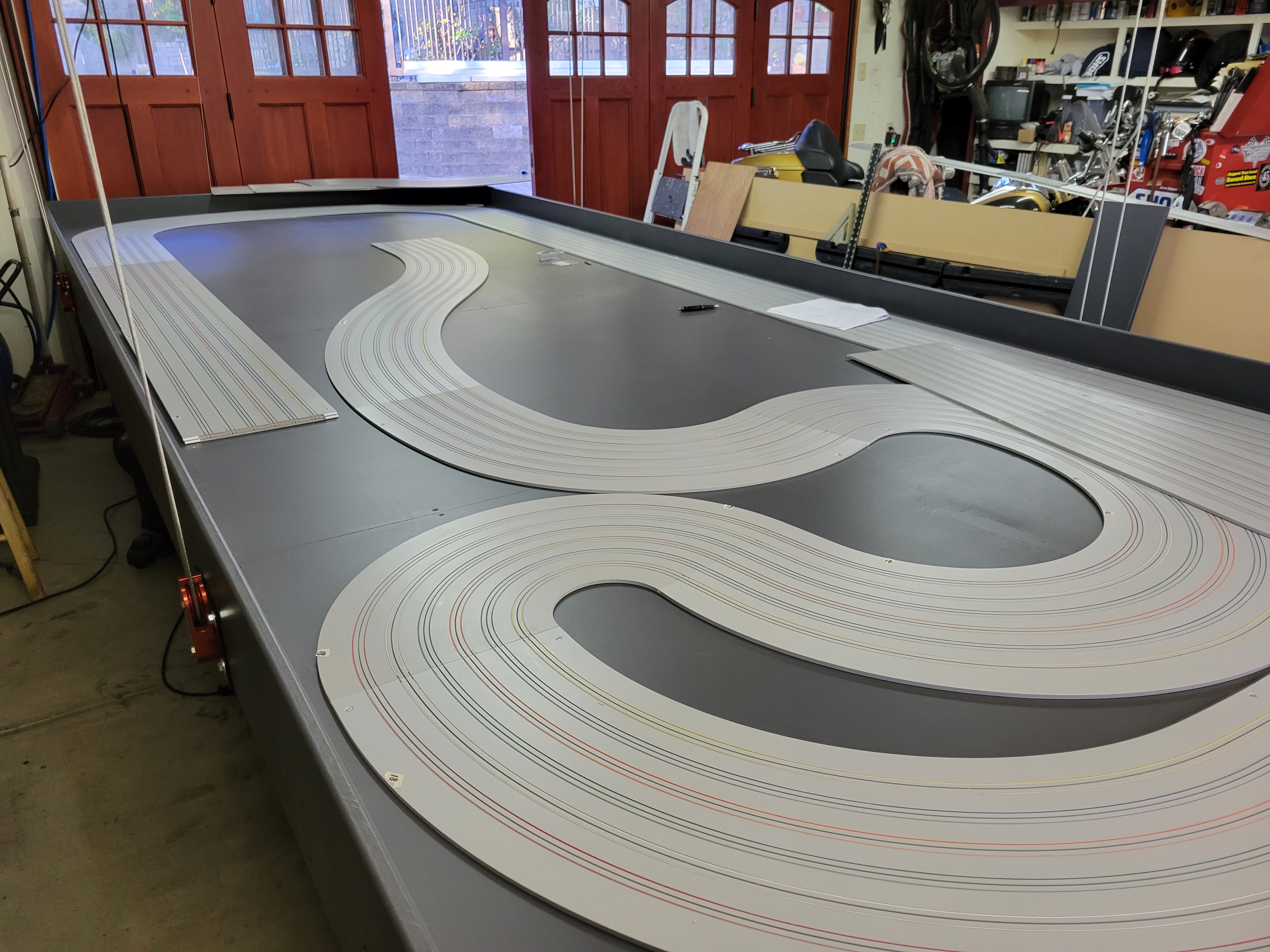 With plenty of other tasks to do the rains have been keeping me indoors. When that happens, I usually play with slot car stuff or hack on computer stuff. This week has been all SR3 construction.
With plenty of other tasks to do the rains have been keeping me indoors. When that happens, I usually play with slot car stuff or hack on computer stuff. This week has been all SR3 construction.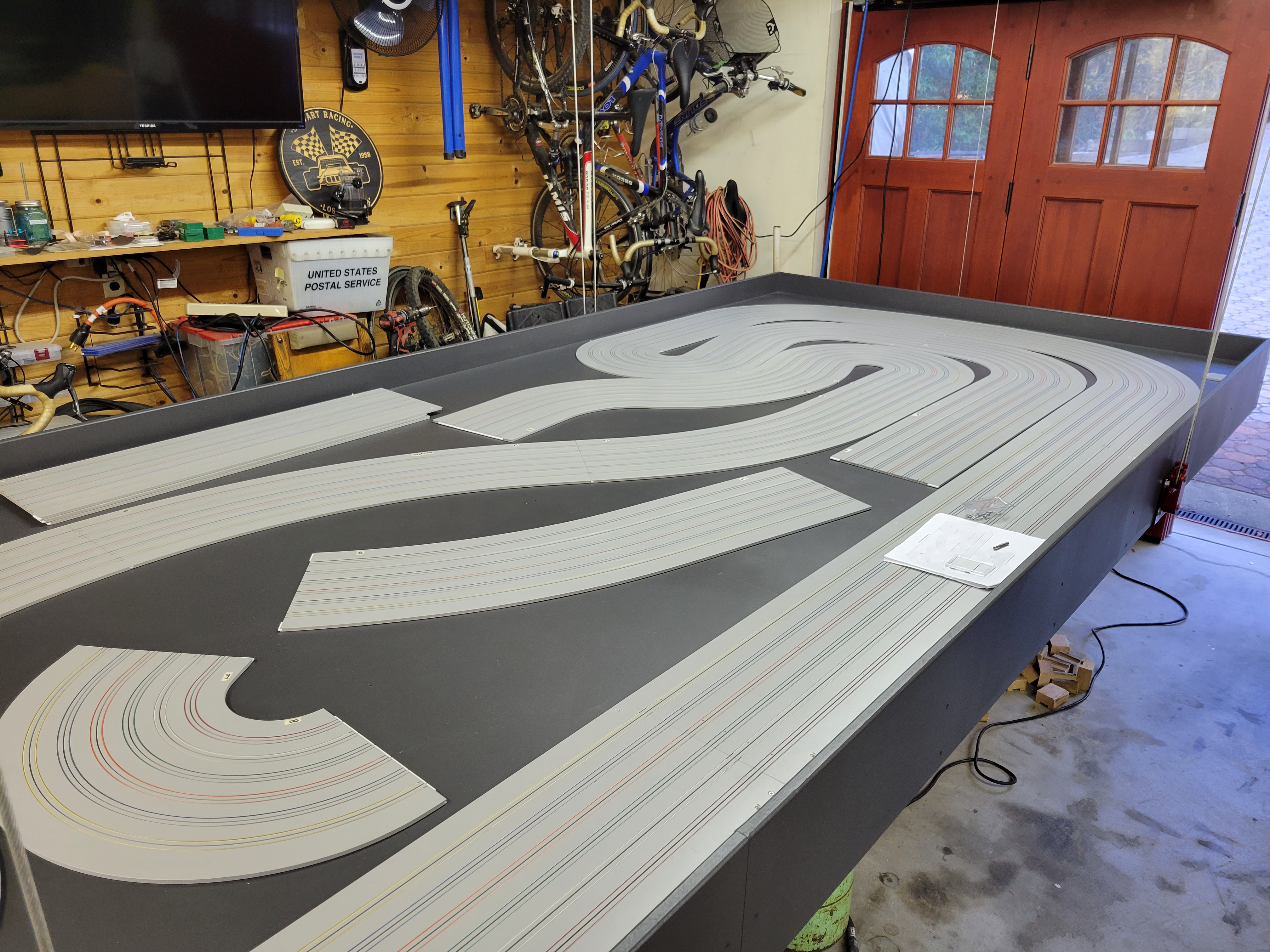
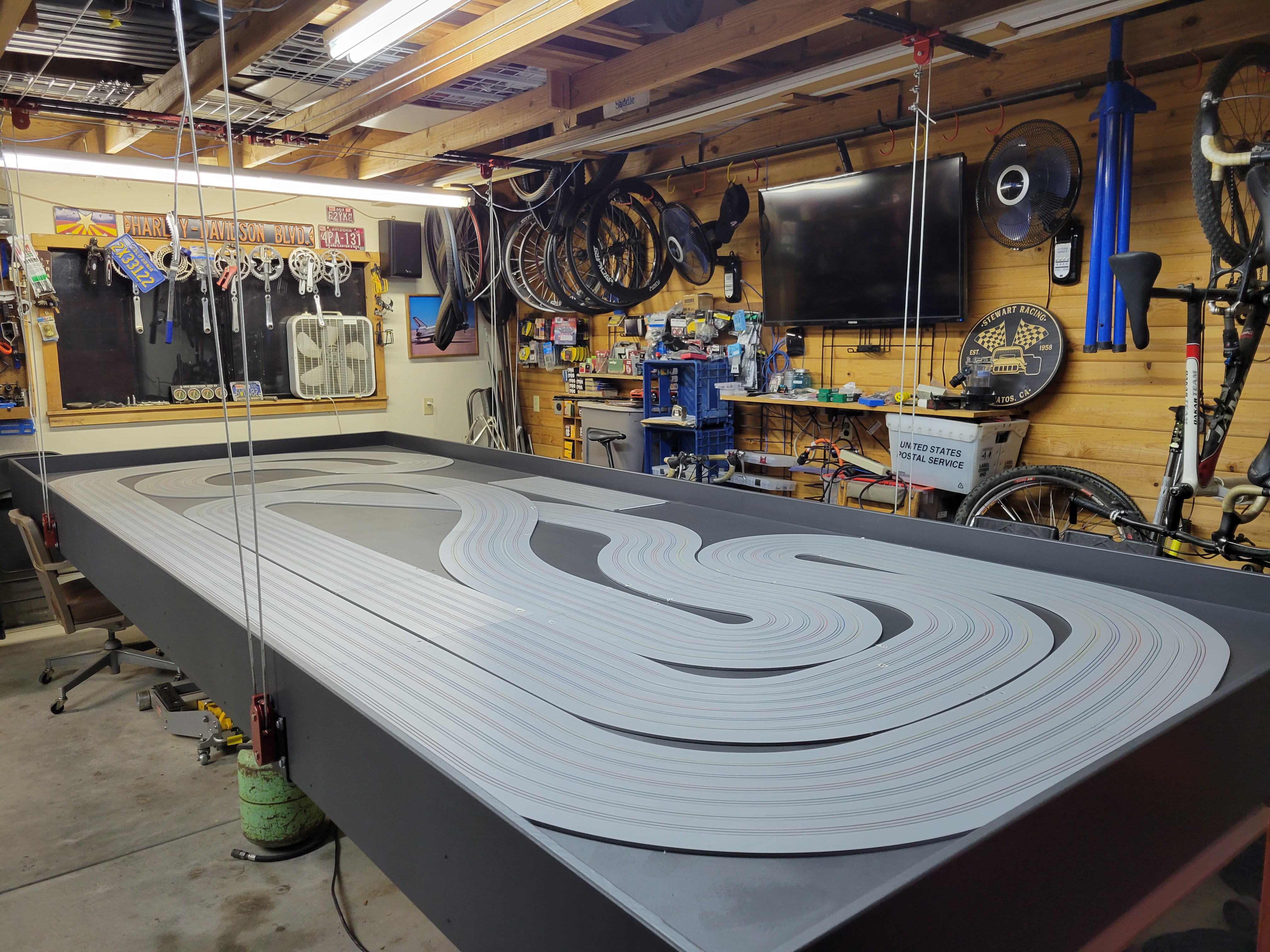 In the case of a convertible oval-to-road course track, you have to get the oval layout dialed first. Then you have a fixed starting point for the rest of the puzzle. I didn’t get the oval to align together perfectly but it was extremely close and I didn’t have time to start over and get it perfect. These shots show the track in various stages of placement completion and the complete placement of the entire course.
In the case of a convertible oval-to-road course track, you have to get the oval layout dialed first. Then you have a fixed starting point for the rest of the puzzle. I didn’t get the oval to align together perfectly but it was extremely close and I didn’t have time to start over and get it perfect. These shots show the track in various stages of placement completion and the complete placement of the entire course.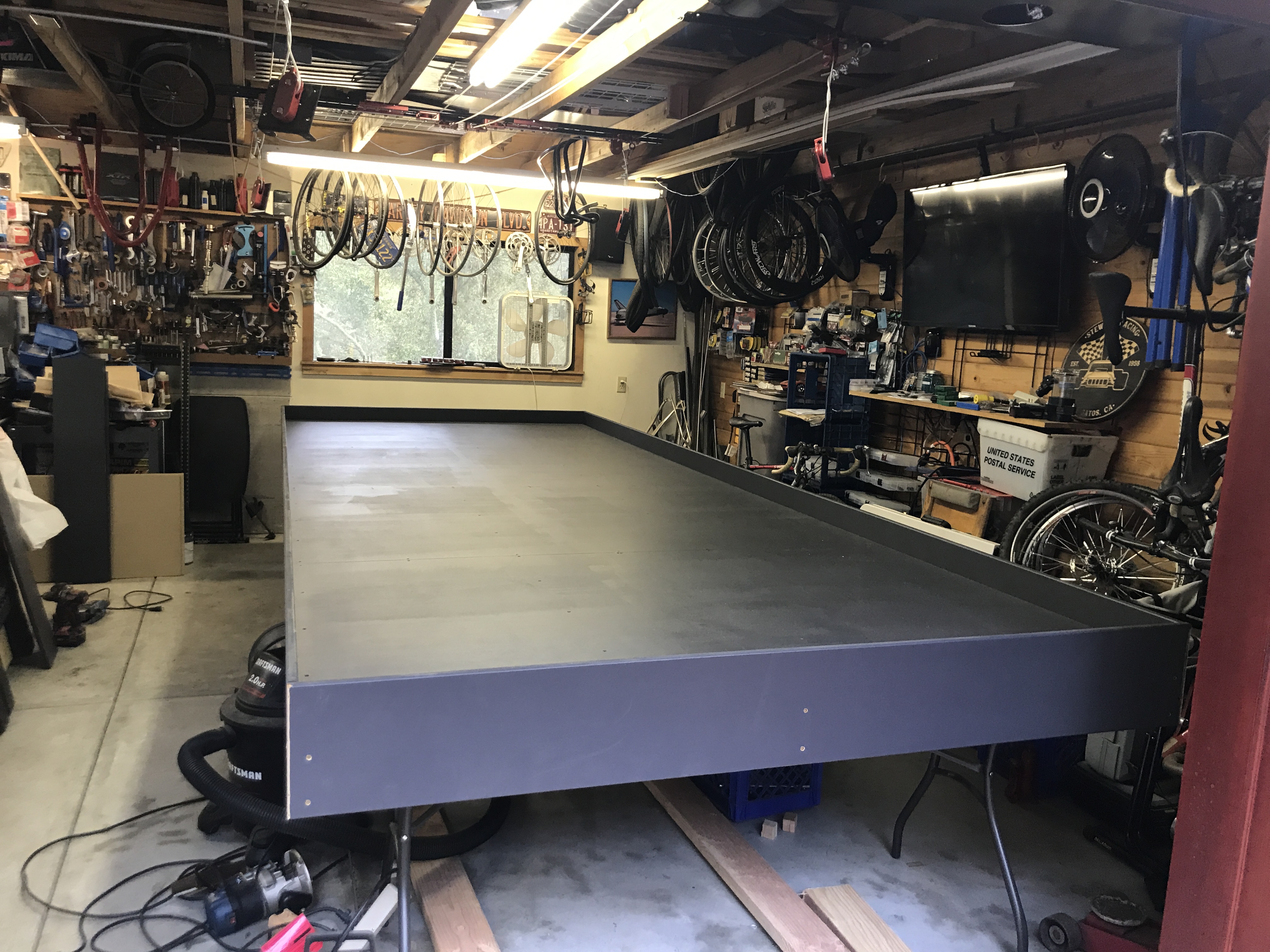
 on the system the only modifications I’ll add are extra horizontal and vertical bracing to the garage joists and some sort of safety straps to prevent a pulley mount from failing. Yea, I didn’t do that with SR2 but this beast makes me nervous to get under for any length of time.
on the system the only modifications I’ll add are extra horizontal and vertical bracing to the garage joists and some sort of safety straps to prevent a pulley mount from failing. Yea, I didn’t do that with SR2 but this beast makes me nervous to get under for any length of time.